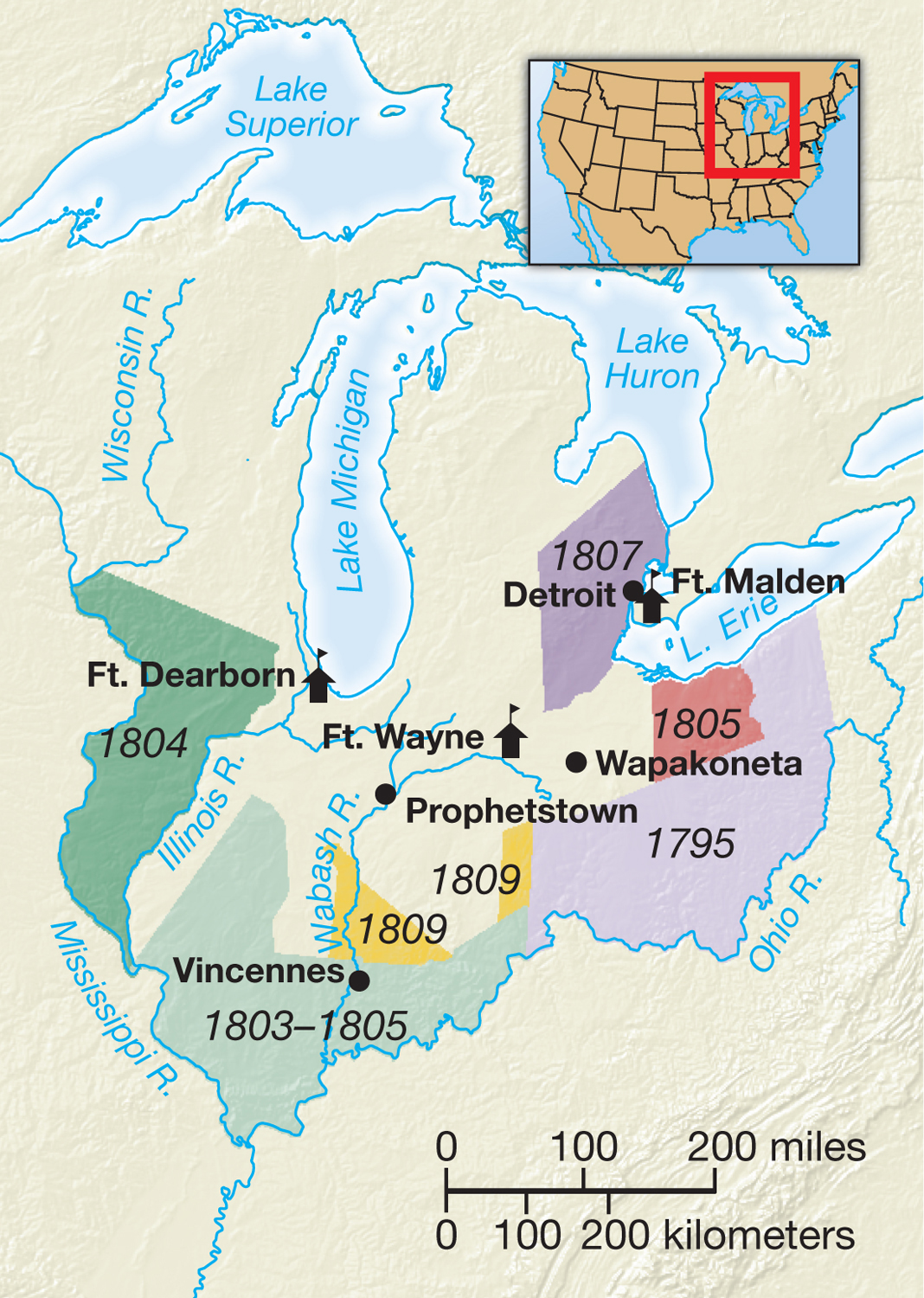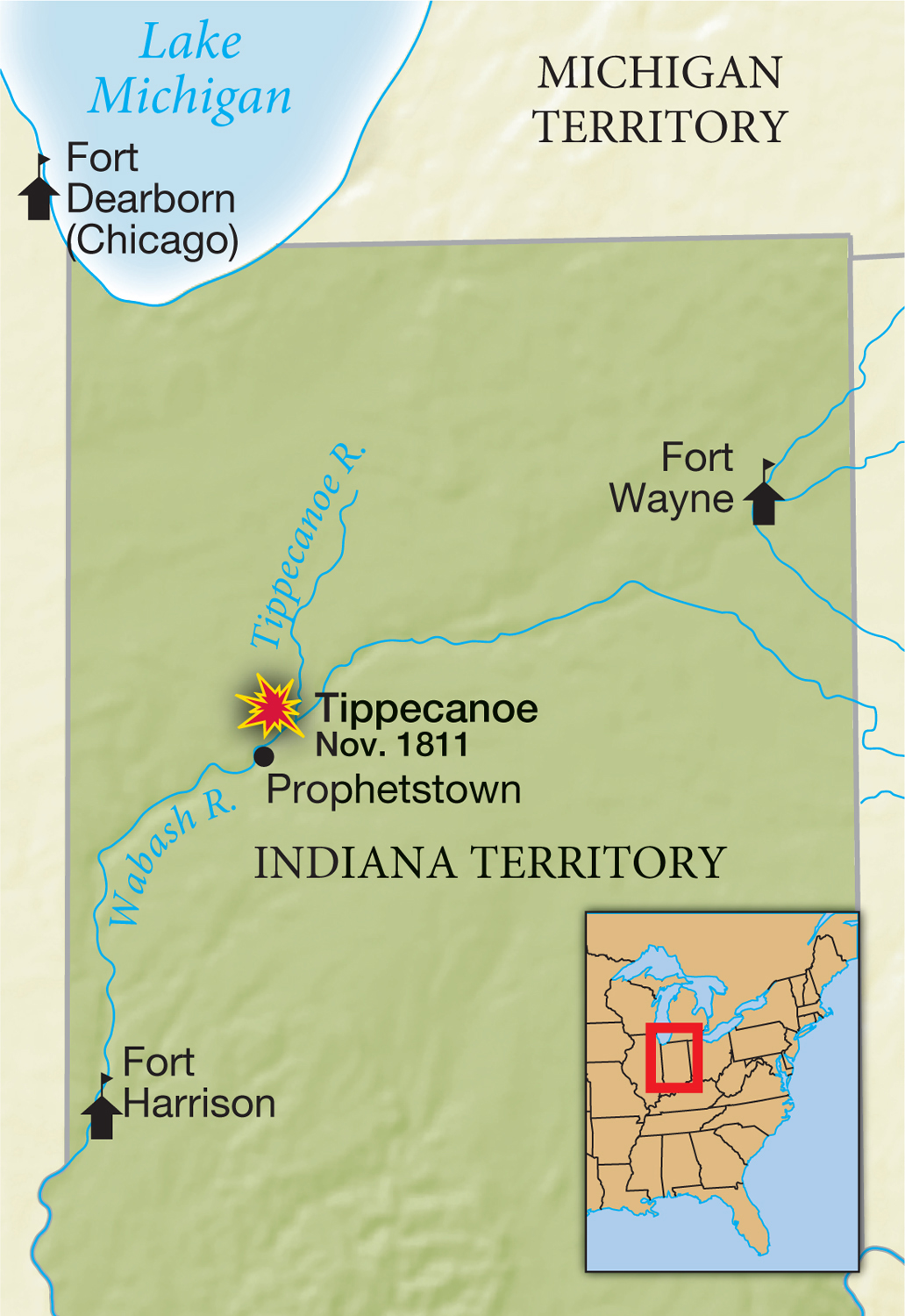The American Promise:
Printed Page 266
The American Promise Value
Edition: Printed Page 252
Chapter Chronology
Tecumseh and Tippecanoe

Indian Lands Ceded in the Northwest Territory before 1810
While the Madisons cemented alliances at home, difficulties with Britain and France overseas and with Indians in the old North-west continued to increase. The Shawnee chief Tecumseh (see the introduction to this chapter) actively solidified his confederacy, while the more northern tribes renewed their ties with supportive British agents in Canada, a potential source of food and weapons. If the United States went to war with Britain, serious repercussions on the frontier would clearly follow.

Battle of Tippecanoe, 1811
Shifting demographics put the Indians under pressure. The 1810 census counted some 230,000 Americans in Ohio, while another 40,000 inhabited the territories of Indiana, Illinois, and Michigan. The Indian population of the same area was much smaller, probably about 70,000.
Up to 1805, Indiana’s territorial governor, William Henry Harrison, had negotiated a series of treaties in a divide-and-conquer strategy aimed at extracting Indian lands for paltry payments. But with the rise to power of Tecumseh and his brother Tenskwatawa, the Prophet, Harrison’s strategy faltered. A fundamental part of Tecumseh’s message was the assertion that all Indian lands were held in common by all the tribes. “No tribe has the right to sell [these lands], even to each other, much less to strangers . . . ,” Tecumseh said. “Sell a country! Why not sell the air, the great sea, as well as the earth? Didn’t the Great Spirit make them all for the use of his children?” In 1809, while Tecumseh was away on a recruiting trip, Harrison assembled the leaders of the Potawatomi, Miami, and Delaware tribes to negotiate the Treaty of Fort Wayne. After promising (falsely) that this was the last cession of land the United States would seek, Harrison secured three million acres at about two cents per acre.
When he returned, Tecumseh was furious with both Harrison and the tribal leaders. Leaving his brother in charge at Prophetstown on the Tippecanoe River, the Shawnee chief left to seek alliances with tribes in the South. In November 1811, Harrison decided to attack Prophetstown with a thousand men. The two-hour battle resulted in the deaths of sixty-two Americans and forty Indians before the Prophet’s forces fled. The Americans won the battle of Tippecanoe, but Tecumseh was now more ready than ever to make war on the United States.

